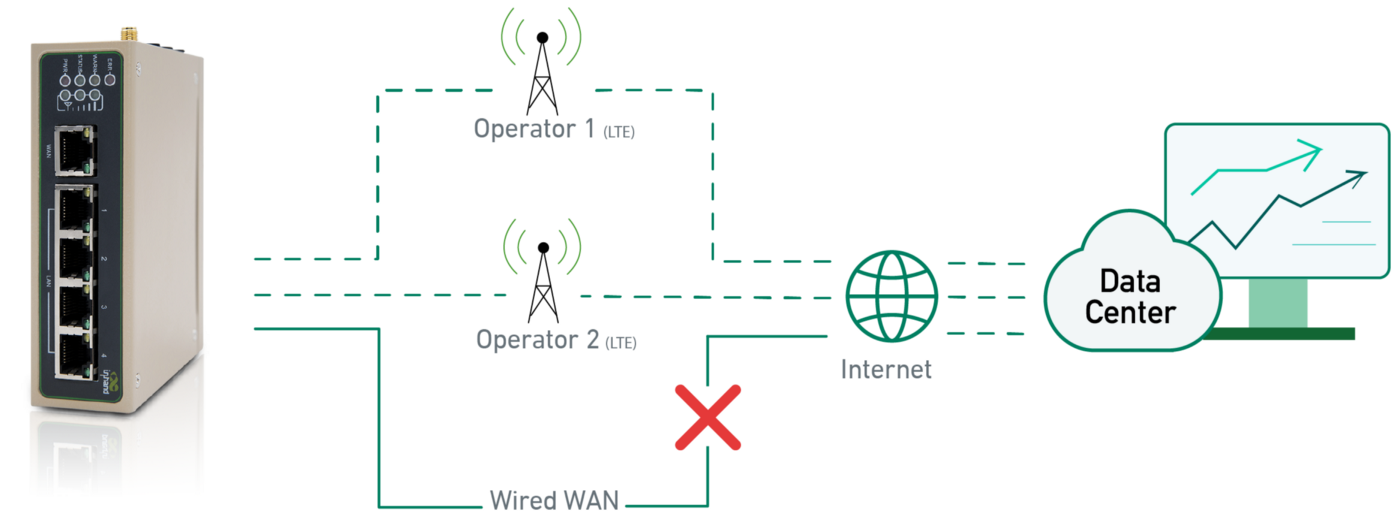What are the failover features on a router?
The failover mechanism is used to increase the reliability and availability of networking devices by configuring several methods to provide redundant implementations.
Firstly, we should know how the networking devices access the Internet.

Normally, there are three ways, wired, Wi-Fi and cellular connection.
It must have Ethernet ports and has at least one WAN port that can support one of the three types of wired access including static IP, dynamic address (DHCP) and ADSL (PPPoE) dialing. But usually, we use DHCP.
For cellular connectivity, it’s available in a choice of high-speed networks Cat 6, Cat 4, low and medium-speed networks (cat1 and Cat M) as well as NarrowBand network NB-IOT.
Wireless Wi-Fi network which can be configured as STA mode and then connects to the SSID that can be scanned nearby.
let’s go further with the Reliability. Here comes the multi-layer mechanism.
Within the single link like cellular connectivity, it basically has dual SIM failover, The main purpose of dual-Sim is to provide failover between different operator networks.
Between the wired, Wi-Fi and cellular connection, there is Link Backup, and that keeps you always online because it provides you with hot backup and load balancing. Once the main link is down, the backup link is automatically switched.
VRRP provides a better option among the two networking devices. It groups multiple devices into a virtual device, whose IP address is configured as the default gateway address to back up the default gateway. If a gateway fails, VRRP elects a different gateway to forward traffic, thereby ensuring reliable network communication. When the master device fails, the traffic destined for the default gateway is forwarded by the backup device.
